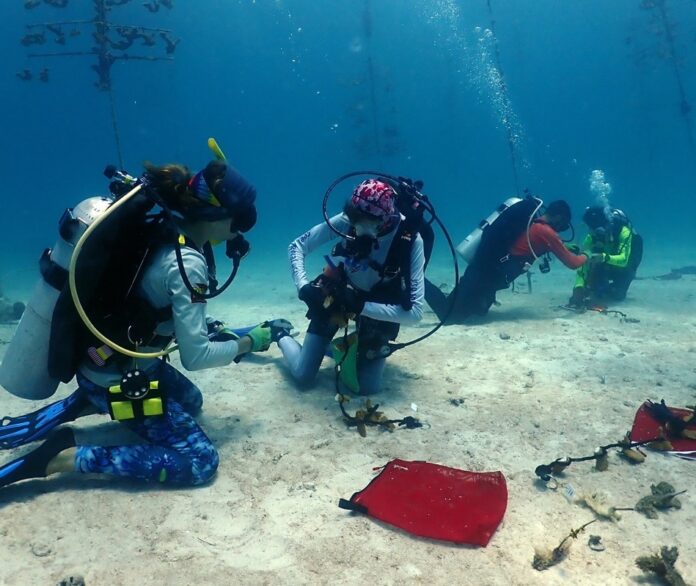
In the face of unprecedented and smothering heat, Florida Keys coral scientists and restoration practitioners are showing up with the resiliency and resolve that they hope our local reefs can embody.
The Situation Has ‘Abated’
The beginning of July brought a record-smashing marine heat wave to the Florida Keys National Marine Sanctuary (FKNMS). One weather buoy in nearby Manatee Bay even registered a jacuzzi-like 101.19 degrees Fahrenheit. The high temperatures have resulted in mass coral bleachings, sponge and fish deaths and fear for the future of our marine ecosystem.
Additional reef monitoring, however, revealed that the “bleaching is site-specific and patchy,” reported a Mission: Iconic Reefs (MIR) factsheet emailed to the Keys Weekly. It also noted that “as of August 9, 2023, the rapid mortality previously observed primarily in inshore and shallower reefs seems to have abated” but that “the situation is still alarming.”
Reef Renewal USA’s founder Ken Nedimyer added, “From Channel 2 down, it’s bad. The better reefs are offshore and in the Upper Keys – from Davis Reef, up. Conch Reef, Pickles and Elbow are still in good shape.” He said these more intact reefs tend to be less exposed to Florida Bay and its salty, inshore waters.
In coral nurseries, the situation is also varied. Coral Restoration Foundation reported the loss of its entire Looe Key nursery, while Nedimyer discussed how both Reef Renewal and CRF’s Tavernier nurseries don’t yet have bleaching. “This is fortunate. Between these two, there’s more genetic diversity than in all the rest combined,” he said. “We have almost every genotype of elkhorn coral in the Keys in those two nurseries.”
The Rescue Plan
For the corals in the various in situ coral nurseries in our waters, there’s a two-part rescue effort underway, said CRF’s Jessica Levy: genetic preservation and stock protection.
For the former, NOAA coordinated a rescue effort with all restoration practitioners in the Keys to ensure the preservation of genetic material of acropora corals. These are the reef-building staghorn and elkhorn corals that formed our reefs and used to dominate them. In this effort, CRF relocated nearly 400 genotypes to two facilities out of the Keys “in case of total catastrophic loss,” Levy said.
Phase two focused on stock preservation “because we aren’t sure how long this will last,” she added. As many corals as possible were moved into temperature-controlled land-based facilities like Keys Marine Lab, Florida Seabase and Florida Aquarium (FLAQ) or to new, deeper water in situ nurseries. So far, CRF has relocated 4,000 corals from low- or at-risk genotypes into tanks.
Reef Renewal rescued some corals into tanks at FLAQ and Marathon’s Dynasty Marine and has built new, deeper, cooler nurseries. Nedimyer said, “(FKNMS Superintendent) Sarah Fangman moved mountains to make things happen. … (Permitting a new coral nursery) is usually a two- to three-month process, and we literally got it overnight. … Unprecedented. The Army Corps of Engineers stepped up, and so did the sanctuary.”
The new nursery holds about 2,000 corals, a subset representing as many different species and genotypes as possible, Nedimyer said. These include endangered brain, star and pillar corals. Reef Renewal set up three new deepwater nurseries as close as possible to their existing regional in situ nurseries.
Nedimyer estimated the rescue effort took roughly 20 divers doing three dives a day, for six days straight. “That’s a lot of tanks and a lot of dives,” he said, grateful. Tavernier’s Conch Republic donated tanks and nitrox air fills. Local divers from the Mission: Iconic Reefs, Buoy and NOAA dive teams helped in the herculean effort. A dive business from Fort Lauderdale even brought five technical divers down to help install the new deepwater nurseries, and seven Georgia Aquarium helpers joined.
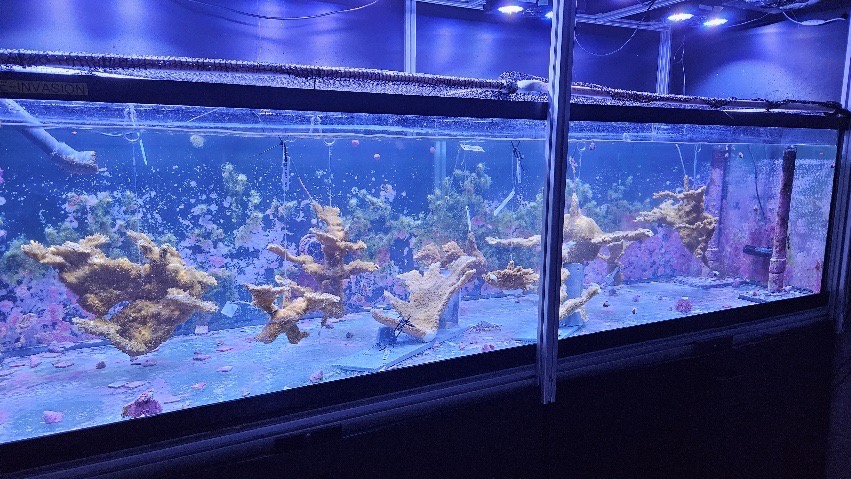
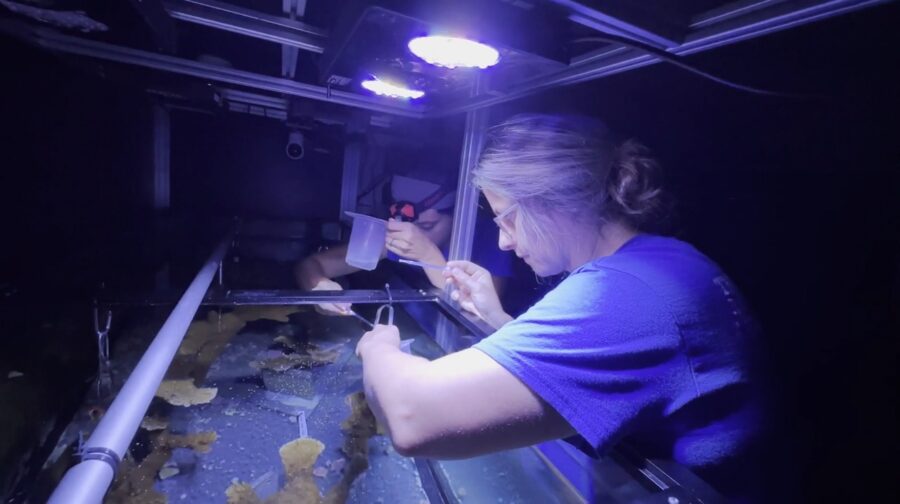
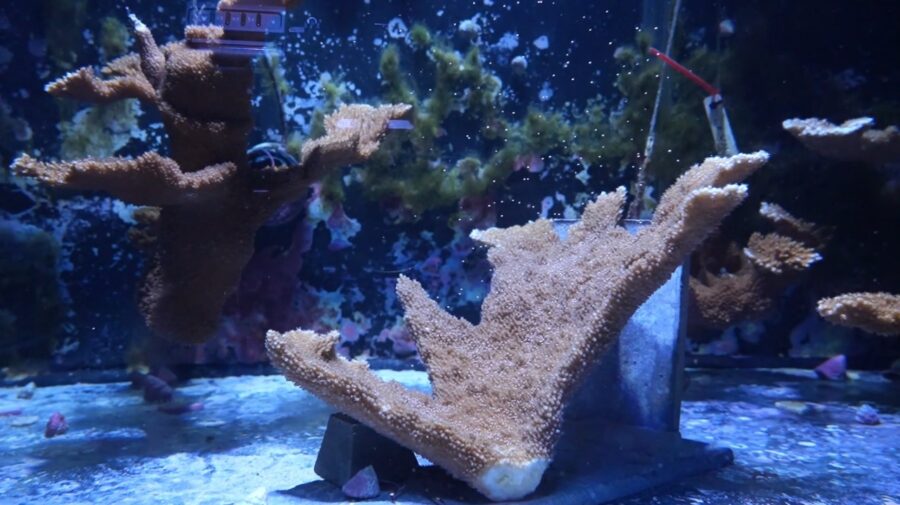
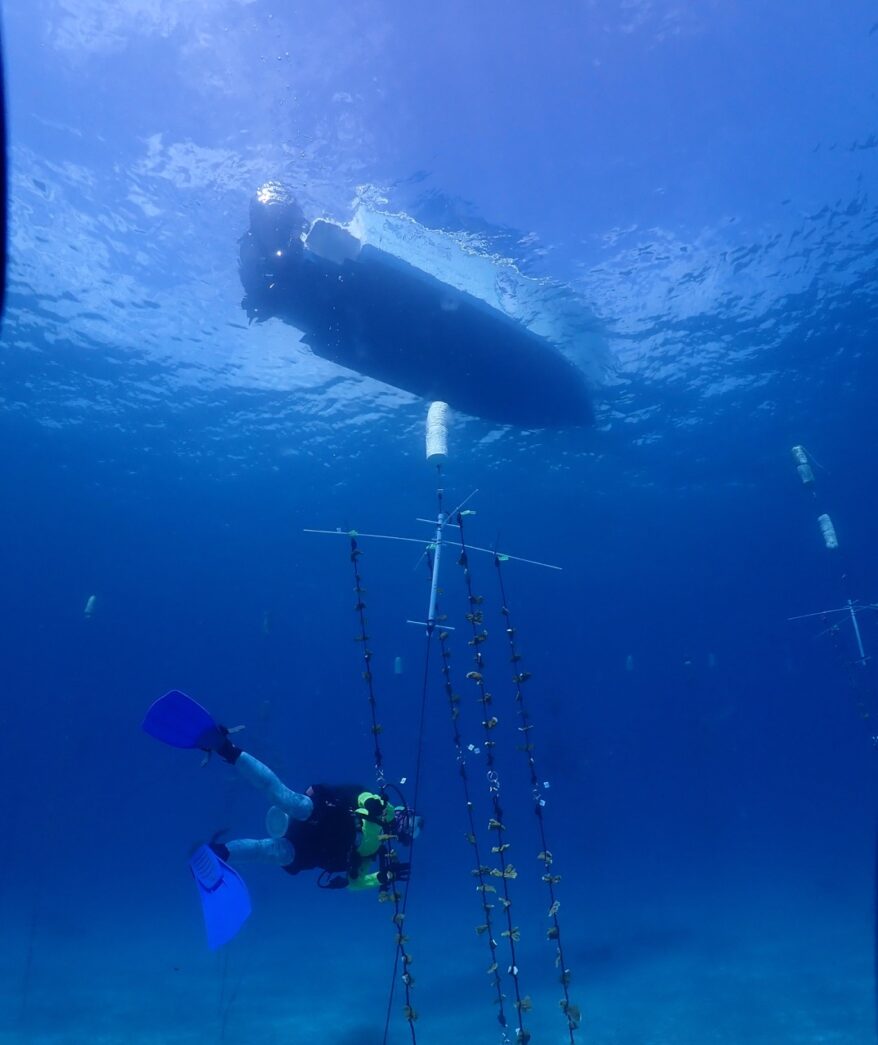
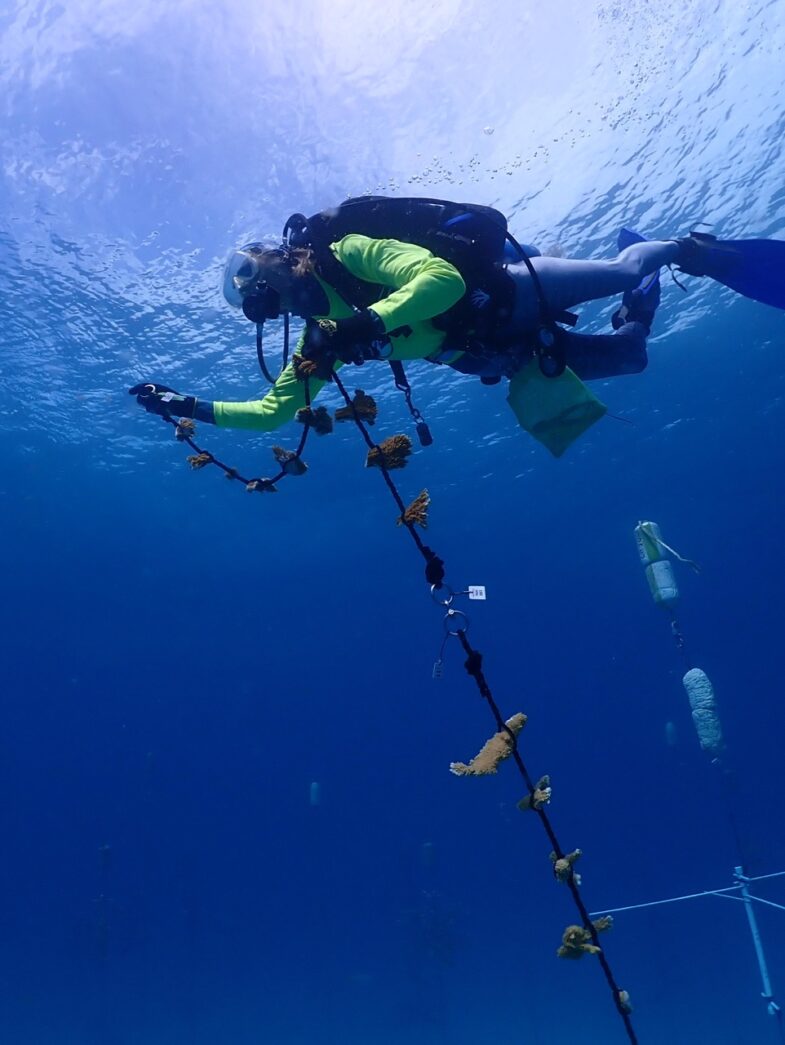
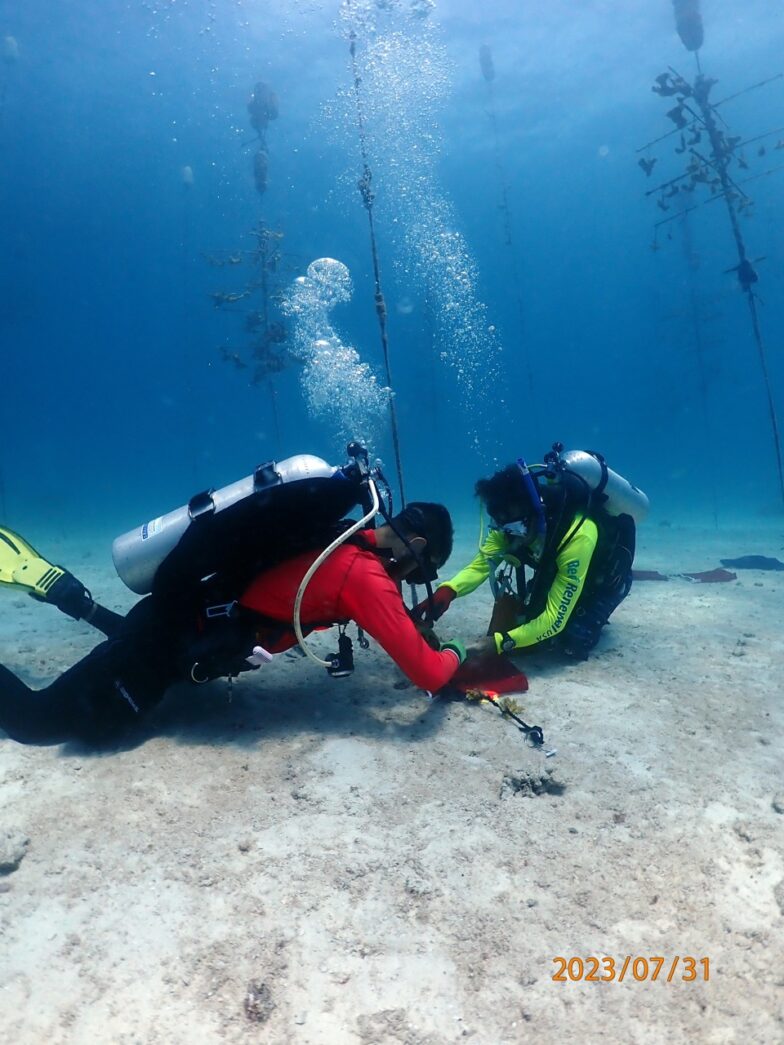
Lessons Learned
As the bubbles settled, the Coral Restoration Consortium (CRC) brought together coral experts around the world on a webinar about how to cope with the 2023 coral bleaching event.
Their tips began with the practical, like monitoring coralreefwatch.noaa.gov to know if a specific reef is at risk for bleaching. The bleaching outlook is updated weekly and based on NOAA’s climate forecasting system. This can help prevent getting caught off-guard, CRC’s Tali Vardi said.
Levy suggested preparing to reduce catastrophic coral loss by having an abundance of coral stock with lots of genetic diversity, checking temperature loggers more frequently and spreading stock across multiple sites.
Other techniques like shading, fogging, cold water injections and cloud brightening were discussed.
In the end, practitioners focused on opportunity and hope. Austin Bowden-Kerby, a coral scientist working in Fiji, suggested, “Use the bleaching event as a selection event to get what we need for moving things forward” with more resilient corals. “This is an opportunity as well as a test.”
Nedimyer agreed, describing how Reef Renewal will be monitoring its subset of genotypes for heat tolerance. He said, “We really want to see which of our corals can handle the heat, then use that to develop the next generation of our restoration program. … There will be some that don’t bleach at all in hot water. We’re looking for them.”
“There’s still a lot of coral diversity on the reef,” Vardi said, “and it’s our job to save that. It’s not easy when it seems like the world is on fire, but the caring and coordination of this community gives me hope.”






















